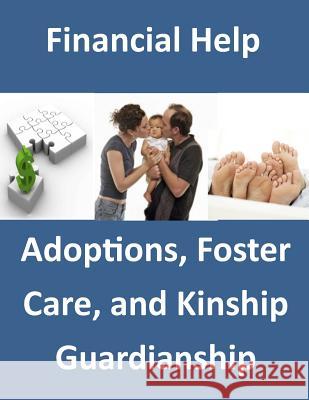Financial Help: Adoptions, Foster Care and Kinship Guardianship » książka
Financial Help: Adoptions, Foster Care and Kinship Guardianship
ISBN-13: 9781499189100 / Angielski / Miękka / 2014 / 76 str.
Financial Help: Adoptions, Foster Care and Kinship Guardianship
ISBN-13: 9781499189100 / Angielski / Miękka / 2014 / 76 str.
(netto: 76,67 VAT: 5%)
Najniższa cena z 30 dni: 80,06 zł
ok. 16-18 dni roboczych
Bez gwarancji dostawy przed świętami
Darmowa dostawa!
Foster care is a temporary living arrangement for children who cannot remain safely in their own homes. For nearly every child who enters foster care, a first goal of the child welfare agency is to ensure necessary services are identified, and provided, so that the child can quickly and safely return to his or her parents. Most children who leave foster care do so to be reunited with parents or other family members. For some children, however, this is not possible. In those cases, the child welfare agency must work to find a new permanent home for these children and this may be accomplished through adoption or legal guardianship. As the U.S. Constitution has been interpreted, responsibility for the protection of children and the well-being of children and their families, is considered primarily a state duty. However, Congress has long sought to assist states in improving their child welfare services. In exchange for federal funding to support provision of foster care and other child welfare services, states must meet certain federal requirements.1 Under Title IV-E of the Social Security Act, states, territories, and tribes who meet those requirements are entitled to claim partial federal reimbursement for the cost of providing foster care, adoption assistance, and kinship guardianship assistance to children who meet federal eligibility criteria. The Title IV-E program, as it is commonly called, provides support for monthly payments on behalf of eligible children, as well as funds for related case management activities, training, data collection, and other costs of program administration. In FY2011, states (including the 50 states and the District of Columbia) spent $12.4 billion under the Title IV-E program, and received federal reimbursement of $6.7 billion, or 54% of that spending.
Zawartość książki może nie spełniać oczekiwań – reklamacje nie obejmują treści, która mogła nie być redakcyjnie ani merytorycznie opracowana.











